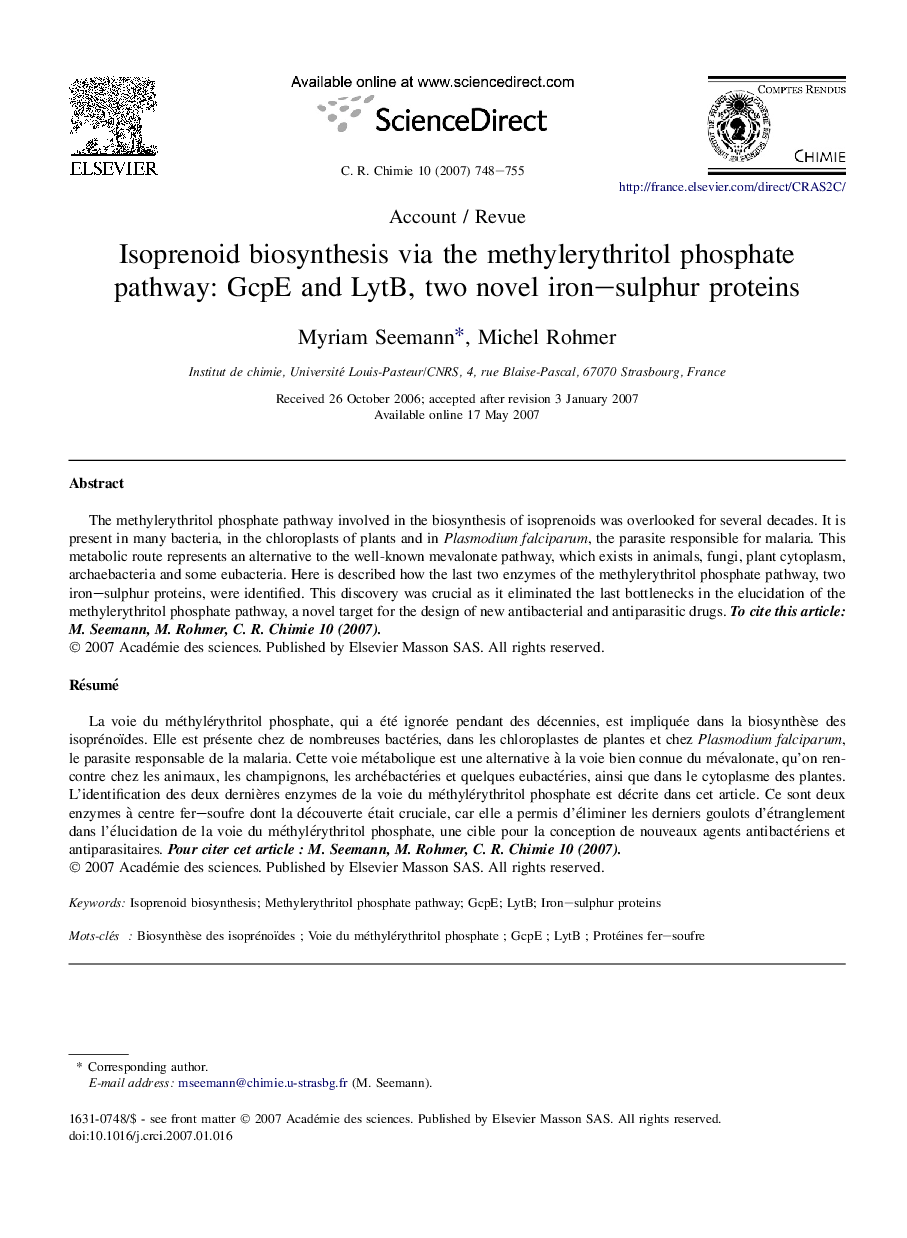| Article ID | Journal | Published Year | Pages | File Type |
|---|---|---|---|---|
| 171520 | Comptes Rendus Chimie | 2007 | 8 Pages |
The methylerythritol phosphate pathway involved in the biosynthesis of isoprenoids was overlooked for several decades. It is present in many bacteria, in the chloroplasts of plants and in Plasmodium falciparum, the parasite responsible for malaria. This metabolic route represents an alternative to the well-known mevalonate pathway, which exists in animals, fungi, plant cytoplasm, archaebacteria and some eubacteria. Here is described how the last two enzymes of the methylerythritol phosphate pathway, two iron–sulphur proteins, were identified. This discovery was crucial as it eliminated the last bottlenecks in the elucidation of the methylerythritol phosphate pathway, a novel target for the design of new antibacterial and antiparasitic drugs.
RésuméLa voie du méthylérythritol phosphate, qui a été ignorée pendant des décennies, est impliquée dans la biosynthèse des isoprénoïdes. Elle est présente chez de nombreuses bactéries, dans les chloroplastes de plantes et chez Plasmodium falciparum, le parasite responsable de la malaria. Cette voie métabolique est une alternative à la voie bien connue du mévalonate, qu'on rencontre chez les animaux, les champignons, les archébactéries et quelques eubactéries, ainsi que dans le cytoplasme des plantes. L'identification des deux dernières enzymes de la voie du méthylérythritol phosphate est décrite dans cet article. Ce sont deux enzymes à centre fer–soufre dont la découverte était cruciale, car elle a permis d'éliminer les derniers goulots d'étranglement dans l'élucidation de la voie du méthylérythritol phosphate, une cible pour la conception de nouveaux agents antibactériens et antiparasitaires.
